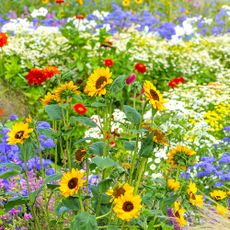Pear Crown Gall Treatment: What Causes Pear Crown Gall
A disease commonly found in fruit tree nurseries and orchards is crown gall. The initial symptoms of a pear tree with crown gall are light colored galls that gradually become dark and harden. As the disease progresses, the tree shows reduced growth. So what causes pear crown gall and is there a treatment for the disease? Let’s learn more.
Symptoms of Crown Gall on Pears
As mentioned, a pear tree with crown gall shows wart-like swellings (galls) on its roots and crown. On occasion, the galls may be seen on the trunks or branches as well. A preponderance of galls actually disrupts the uptake of water and nutrients into the tree from the root system. This causes the tree to look generally unhealthy.
What Causes Pear Crown Gall?
Crown gall afflicts 140 genera in 60 different families worldwide. It is caused by the bacterium Agrobacterium tumefaciens. The infection passes into the plant through wounds arising from transplanting, wind damage, insect injury, etc. Once the bacterium has entered the tree, it alters normal cells into tumor cells. The extent of damage to an infected plant depends on how many galls are present and how they are situated. Death of the tree may result if the galls girdle the trunk. Also, infected trees are more susceptible to winter injury and drought stress.
Pear Crown Gall Treatment
Control of crown gall on pears is primarily dependent on prevention. The bacterium is systemic and galls can reproduce themselves, so pruning off the swelling isn’t effective. Prior to purchasing the tree, inspect it for crown galls. If a tree becomes infected, dig it and as many of its roots up as possible and destroy them. Take care when moving, transplanting, staking, mowing or cultivating around the tree to avoid injury. Regularly sanitize pruning tools with a disinfectant solution between uses. Also, control insects that feed on roots. Keep the tree as healthy as possible with proper fertilization, watering, and pruning; a healthy, well-cared for tree will go a long way in preventing pear crown gall.
Gardening tips, videos, info and more delivered right to your inbox!
Sign up for the Gardening Know How newsletter today and receive a free copy of our e-book "How to Grow Delicious Tomatoes".

Amy Grant has been gardening for 30 years and writing for 15. A professional chef and caterer, Amy's area of expertise is culinary gardening.
-
 Cut Flower Garden For Beginners: 8 Easy Decorative Floral Plants For Newbies To Grow
Cut Flower Garden For Beginners: 8 Easy Decorative Floral Plants For Newbies To GrowAre you new to growing decorative florals for bouquets and ornamental displays? A cut flower garden for beginners is well within reach if you grow these flower seeds
By Tonya Barnett
-
 10 Flower Seeds To Sow In April For Endless Blooms Through Summer & Fall
10 Flower Seeds To Sow In April For Endless Blooms Through Summer & FallDiscover the best annual and perennial flowers to plant in April to ensure a sea of color in borders and containers that lasts all summer and into fall.
By Bonnie L. Grant
